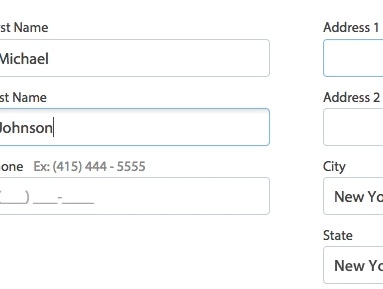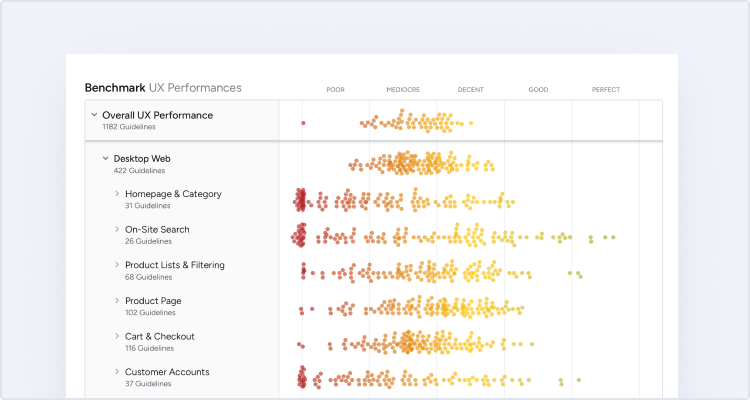Stop & Shop UX Case Study
This is a case study of Stop & Shop’s ecommerce user experience (UX) performance. It’s based on an exhaustive performance review of 705 design elements. 325 other sites have also been benchmarked for a complete picture of the ecommerce UX landscape.
Stop & Shop’s overall ecommerce UX performance is xxxx xx xxxxxxxxx xxxxxx xx xxxx xx xxxx xx-xxxx xxxxxx xx xxxxxxxxxx, xxx xxxxxxxxx xx xxxxxxxxx xxxxxx xx xxxxxxx xx xxxxxxx xxxxxxxx & xxxxxxxxx xxxxxxxxxxx Upgrade to access Stop & Shop’s case study.
First benchmarked in April 2012, and reviewed 2 times since then, most recently in January 2025.
Stop & Shop’s UX Performance upgrade

This competitor benchmark report is only available on a paid plan
Sign up to a Baymard paid plan to get instant access to 250+ Detailed UX benchmark reports for your industry competitors and leading brands.
Want to find out what Baymard access can do for your team? Get access to 5% of our research, including 50 Best Practice Guidelines, with a Free Plan today!

To learn how we calculate our performance scores and read up on our evaluation criteria and scoring algorithm head over to our Methodology page.
Stop & Shop’s Desktop Web Ecommerce Design
32 pages of Stop & Shop’s ecommerce site, marked up with 186 best practice examples:
Stop & Shop’s Mobile Web Ecommerce Design
26 pages of Stop & Shop’s ecommerce site, marked up with 189 best practice examples:
Stop & Shop’s Mobile App Ecommerce Design
24 pages of Stop & Shop’s ecommerce site, marked up with 168 best practice examples:
Explore Other Research Content
Every week, we publish a new article on how to build “state of the art” ecommerce experiences — here’s 5 popular ones:

Drop-Down Usability: When You Should (and Shouldn’t) Use Them

Format the “Expiration Date” Fields Exactly the Same as the Physical Credit Card (72% Don’t)

PDP UX: Core Product Content Is Overlooked in ‘Horizontal Tabs’ Layouts (Yet 28% of Sites Have This Layout)

Form Field Usability: Avoid Extensive Multicolumn Layouts (16% Make This Form Usability Mistake)

Form Usability: Getting ‘Address Line 2’ Right
See all 431 articles in the full public archive.










































